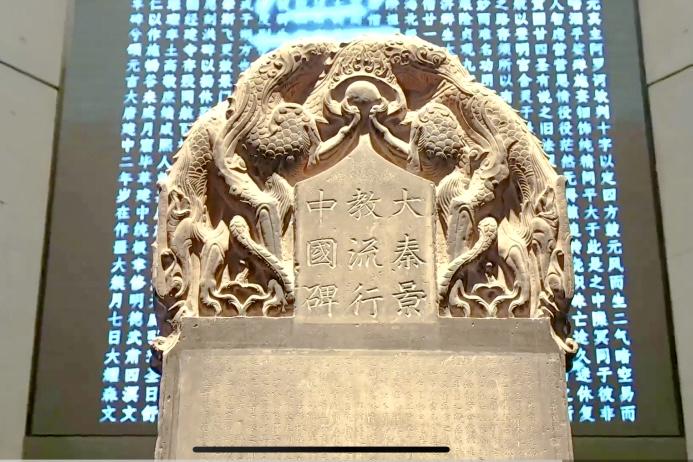The Xi'an Beilin Museum, also known as the Stele Forest Museum, officially opened its expanded northern exhibition district on May 12, ahead of International Museum Day 2025.
Founded in 1944, the Beilin Museum is the oldest museum in Shaanxi Province and specializes in collecting, researching and displaying steles, epitaphs and stone carvings from historical dynasties.
With the expansion, the museum's exhibition space has grown from 8,000 square meters to 23,000, and the number of displayed cultural relics has increased from more than 1,000 to over 2,000.
To introduce the new exhibition to the public, Deputy Director Zhang Yan and museum tour guide Bai Xuesong hosted a live broadcast on May 15.
Among the museum's most prized artifacts is the Jingjiao Stele, one of three Chinese national treasures prohibited from being exhibited abroad and is featured in the "Silk Road Stone Language—Medieval Stele Records and the Silk Road" exhibition on the second basement level of the museum's east wing.
According to the museum, the Jingjiao Stele was erected in 781 AD, the second year of the Jianzhong period during the Tang Dynasty, originally placed at the Daqin Temple in Chang'an. The text was authored by the Persian missionary Jing Jing and inscribed by Lu Xiuyan. The stele features a dragon-shaped head and a tortoise base, measuring 193 cm in height and 96 cm in width. It contains 32 lines of regular script with 1,780 Chinese characters. The inscription documents the introduction and development of Christianity in China during the 7th and 8th centuries. It is recognized as one of the world's four famous steles and is renowned both domestically and internationally.
During the live broadcast, it was explained that "Daqin" was the ancient Chinese name for the Roman Empire, while "Jingjiao" referred to Nestorian Christianity following its introduction into China. By the time the stele was erected, the Luminous Religion had been present in China for nearly 150 years. The classical Chinese inscription preserves a historical period absent from traditional records. Without the stele's rediscovery in the late Ming Dynasty, much of this history would have been lost.
The base and sides of the Jingjiao Stele are inscribed in ancient Syriac, making it a bilingual monument. It serves as vital evidence for studying the script used by Eastern Roman missionaries of the time and is therefore revered as a sacred Christian artifact.
The broadcast also highlighted several key historical details recorded on the stele: During the An-Shi Rebellion, Nestorian Christians supported the Tang imperial court by donating resources to suppress the uprising, which earned them official recognition and numerous privileges. Many Nestorian temples were subsequently established in the capital, Chang'an. The inscription further notes that Emperor Taizong of Tang dispatched Prime Minister Fang Xuanling to welcome the Nestorian missionary Alopen to the western suburbs of the capital, supporting his evangelistic and scripture translation efforts.
Originally published by the Gospel Times












